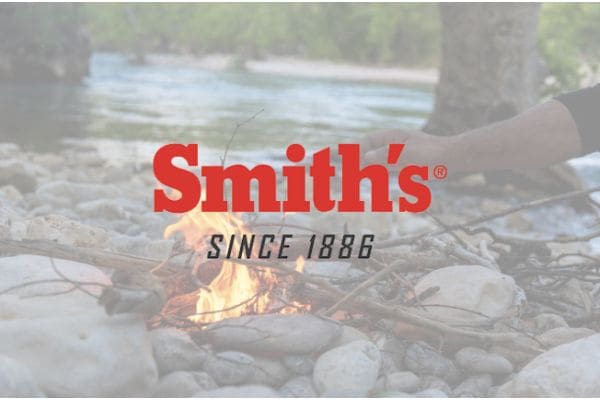Estimated reading time: 15 minutes

Stockpiling is pretty much the beginning and ending of prepping. I say that because it’s generally the first thing any of us do. We often start out stockpiling even before deciding that we’re going to become preppers.
At the same time, most of us are still adding to our stockpiles long after we finish all our other prepping projects. It seems like we never truly finish the process of stockpiling.
Part of this is because stockpiling is rather expensive, especially if you want to stockpile enough supplies to last a full year. While there is no guarantee that a year’s worth will be enough, that’s become somewhat of a goal for many of us. Having a year’s worth of supplies has somehow become like reaching level 10 as a prepper.
The other thing that keeps us working on our prepping stockpiles is that we keep finding more and more things we need. How many of us realized just how many masks we needed to have in our stockpile before COVID struck? How many things have we added since the pandemic started?
I’m always looking for things that I need to add to my stockpile. Some of them might not seem all that normal to most people, or even seem like survival gear. But when a survival situation comes, you’re going to wish you’d stockpiled these things, too.
Want to save this post for later? Click Here to Pin It On Pinterest!
Arrowheads

Regardless of how much ammunition you have, you should stockpile some arrowheads. While there are a number of different ways of making arrowheads, they aren’t all that easy. Knapping flint arrowhead is especially difficult.
I’m not necessarily talking about broadhead arrowheads here—the kind that are used for big game hunting. You’re more likely to end up hunting for small game with your bow. So even if you do stockpile a few broadheads, I’d really recommend having what are known as field points.
These are not only a whole lot less expensive, but they are just about ideal for small game, as they won’t make as big a wound cavity, while still being enough to bring down those smaller animals.
Bag Balm

Bag Balm was originally developed to soothe irritation on cows’ udders, but it has morphed into a versatile, must-have ointment for many people. It’s great for treating cracked hands, feet, and any skin that’s been exposed to harsh conditions.
In a pinch, it can also be used to lubricate squeaky hinges, waterproof leather items, and even protect metal from rust. Its antibacterial properties add an additional layer of usefulness, preventing minor cuts and scrapes from becoming infected.
Borax

Though often relegated to the laundry room, Borax is incredibly useful around the house. You can use it to clean tubs, toilets, sinks, countertop, the fridge, and other surfaces that frequently get dirty. It can also clean mold and mildew, it can remove rust and stains, it can deodorize carpets and mattresses or even trash cans. Plus, it will kill ants and keep other pests away.
There’s more, but you get the idea. During times when prices are skyrocketing or cleaning supplies are hard to come by due to supply chain problems, you can use borax to keep your home clean and smelling fresh. Just be careful you don’t accidentally ingest any as it is toxic to humans and animals.
Calcium Hypochlorite

Many survival blogs talk about stockpiling liquid bleach so you can use it to purify water. The problem is, bleach only has a shelf-life of about 6 months to a year at best. A great alternative is calcium hypochlorite (often referred to as “pool shock”), which has an indefinite shelf life.
To make bleach, first you should put on some protective gear such as gloves and goggles. Then, mix 11 tablespoons of granular calcium hypochlorite with 1 gallon of water. Stir it until dissolved. Be careful with this.
To purify water, use 6 drops of this bleach per gallon of water and stir it up. Wait 30 minutes, and if you don’t smell the blech, add a few more drops and wait another 30 minutes. With this method, a single pound of calcium hypochlorite can purify 30,000 gallons of water!
Carabiners

Carabiners are incredibly handy in a variety of survival situations. They’re perfect for securing gear to your bug out bag, hanging items off the ground, or even setting up snare traps.
They’re also useful for makeshift repairs on shelters or vehicles, hanging up a hammock, constructing a shelter, or even medical uses like securing a splint or making a stretcher. The limit is your imagination.
Dryer Lint

When you clean out the lint trap in your dryer, don’t throw the lint away. Why? Because dryer lint makes fantastic tinder. I keep mine in a large Ziploc bag so it stays nice and dry.
To make it even better, you can mix it with a little bit of petroleum jelly, paraffin wax, or even cooking oil. Doing that will make it burn longer and thus make it easier to get a fire going.
If you don’t want to bother doing that every time, you can make a bunch of dryer lint fire starters ahead of time with an egg carton and some paraffin wax. Here’s how.
Fishhooks

I don’t know why people think that having two fishhooks is enough for a survival fishing kit. I can’t hardly ever go fishing without losing a whole lot more than two hooks.
Yet when I look at most people’s survival fishing kit, two hooks is all I see. For me, I’d go with 100 or so. For that matter, I’d up the ante on bobbers and other critical fishing tackle.
Of all the various types of food that can be harvested from nature, fish are the most plentiful. Long after the big game is gone, there will still be fish in our rivers and lakes.
Somehow, fish manage to live and thrive in some of the most unlikely bodies of water. But that just helps ensure that they will be there when we need them. Just make sure you have plenty of fishhooks.
Hydrogen Peroxide

Hydrogen peroxide isn’t just for cleaning wounds and preventing infection. It can be used for all sorts of things including disinfecting water, cleaning countertops and other surfaces, controlling mold and mildew, and removing stains on clothing.
Believe it or not, hydrogen peroxide can also be used in the garden. It works as a fungicide and insecticide. To use it, mix a tablespoon of hydrogen peroxide in a gallon of water and put it in a spray bottle, then spray the soil and the base of your plant a couple times per week.
Lime

Lime is one of the most forgotten items for preppers to stockpile. No, I’m not talking about the fruit; I’m talking about a calcium-containing mineral compound, specifically calcium-hydroxide.
Today, lime is commonly used as a building material, such as being included in concrete mix. But it is also used extensively for wastewater treatment. In our case, it is useful for putting in outhouses and other latrines to reduce odor, as well as reducing flies.
Pantyhose

Pantyhose has a surprising number of uses that most people have never thought of. If you’re going hiking all day, wearing pantyhose can prevent blisters and bites from insects like ants, ticks, and chiggers. There’s no need to turn in your man card. It’s just practical.
You can also use pantyhose to pre-filter water, sprout seeds, support vines, organize small items, store food like garlic and onions, dry out tinder, and many other things. You just have to think outside the box.
Plastic Bags

Plastic bags, whether Ziploc bags or grocery bags, are one of those items with a million uses. From storing seeds to lining a bucket toilet to collect human waste, we’re going to find a lot of places where plastic bags are useful in any survival situation. Stockpile a variety of sizes, so that you have plenty of options to choose from.
Potassium Permanganate

This is one of the most underappreciated chemicals in the prepper world. Potassium permanganate has several interesting uses. For one, it can purify water. However, I should warn that this is not the preferred method for purifying water, so only do this if there’s no other option.
To do this, and 0.1 grams to 1 liter of water, stir it up, and let it sit for 30 minutes. Doing this will kill bacteria, algae, viruses, and fungi. Once the water is ready, it should be a light pink color. If it’s dark pink or purple, don’t drink it!
There are also cleaning and medical uses for potassium permanganate. You can even use it to start a fire. Learn more in this article.
Rat Traps

One of the things that tends to happen in the wake of any disaster is a rise in the rat population. This is mostly due to increases in food supplies for the rats. But rats can carry disease, as well as getting into our own food supplies.
So even though we might find ourselves in the position of eating those rats, we are really better off getting rid of them. But getting rid of them either means having a cat that’s good at catching rats or having a good supply of rat traps. So if you don’t have the cat, better buy the traps.
Rawhide

I’ve seen a lot of people talk about making primitive weapons at one time or another. I have nothing against that, but if you’re going to make primitive weapons, you’re going to need the right materials to work with.
If you look at those primitive weapons and how they used to be made, rawhide lashings were a critical component. While we can use paracord, it won’t work as well.
There are two key characteristics of rawhide that make it such a good lashing material for things that have to be tied together permanently. The first is that it stretches when wet. Then, as it dries, it shrinks. That tightens up the joint, making it stronger.
The other characteristic is that once it dries, it’s hard, making it hold things together even better. Rawhide basically can’t loosen up over time, like twine or paracord can.
Repair Parts

Pretty much anything mankind can make, can break. That’s just as true of our survival gear as it is of anything else we use. In a true survival situation, all that gear’s going to get some heavy use; so it only makes sense to be ready to repair it.
For example, if you have one of the old Coleman lanterns that burn gasoline, you’d better have a rebuild kit for the pump as that’s a critical part that can fail with heavy use.
Another area that we all need repair parts for is our homes. Natural disasters provide plenty of chances for our homes to become damaged, such as by a tree branch falling on the house’s roof.
If you don’t have supplies for emergency repairs, that damaged roof will leak, making it impossible to use that part of the house and causing further damage to your home.
Salt

Another commonly forgotten item in most people’s survival stockpiles is salt. I’m not talking about a pound of salt for seasoning your food. I’m talking about large quantities of salt for preserving food.
Salt is the common ingredient in many types of food preservation, because it is a natural preservative. We need it for canning, dehydrating and smoking, as well as variants of those such as making jerky and salt fish.
If you don’t have 100 pounds or more of salt in your stockpile, you probably don’t have enough.
Silica Gel Packets

Silica gel packets are put in shoe boxes and electronics packaging to absorb moisture. People usually toss them, but if you’re storing food or supplies that need to be kept dry, why not keep them and reuse them?
These things can also prevent mold and rust on everything from ammunition to important documents. Toss a few in with your electronics, metal tools, and food storage (just make sure they don’t break up and get into your food).
Spokeshave

The spokeshave is probably one of the most useful tools there is for making primitive tools such as clubs, spears and bows. It is a two-handed tool, with a small blade much like a hand plane has.
Originally used for making wood spokes for wheels, the spokeshave is the perfect tool for turning a sapling into a bow because it allows you to very selectively cut material off that sapling. While it might be possible to make a bow using other methods, such as whittling, no other method works as well.
Wicking

It’s common for people to talk about adding candles to their survival stockpiles, but not candle or lamp wicking. Granted, it’s unlikely that any of us are going to find a stash of paraffin that we can use to make candles, and few of us have bees.
So why stock candle wicking? Because it can be used to make an oil lamp, providing light when the batteries go dead and all the candles are gone.
There are many flammable substances that can be used in an oil lamp and many different things that can be used to make an improvised lamp. The key component is the wick. Oil lamp wicking is the best, as it is generally wider than candle wicking; but the wider versions of candle wicking will work too.
Basically, the wider the wick, the larger the flame, resulting in more light being produced. But at the same time, the faster the lamp will burn the oil. So there’s a tradeoff there.
Like this post? Don’t Forget to Pin It On Pinterest!
You May Also Like:
Read the full article here




